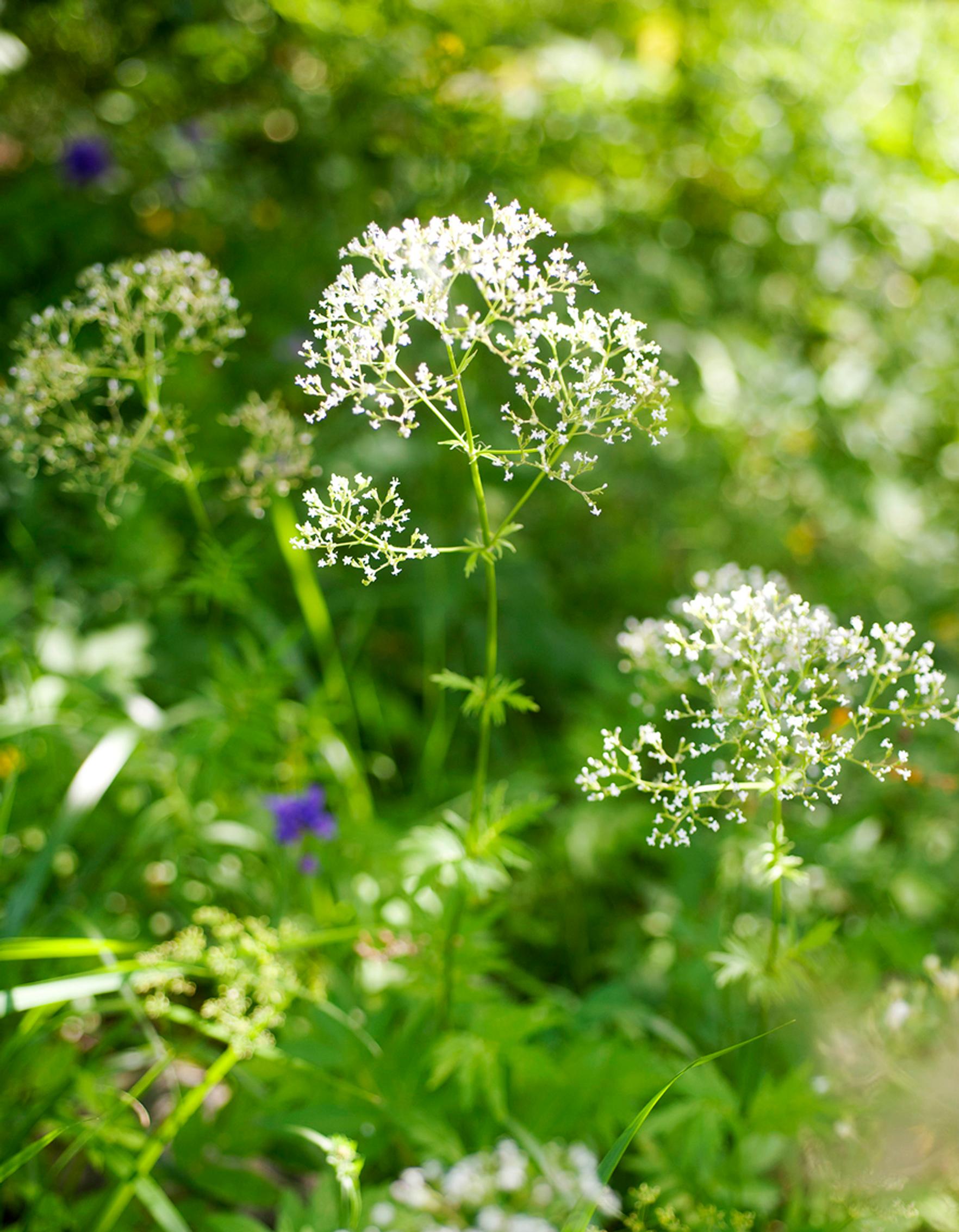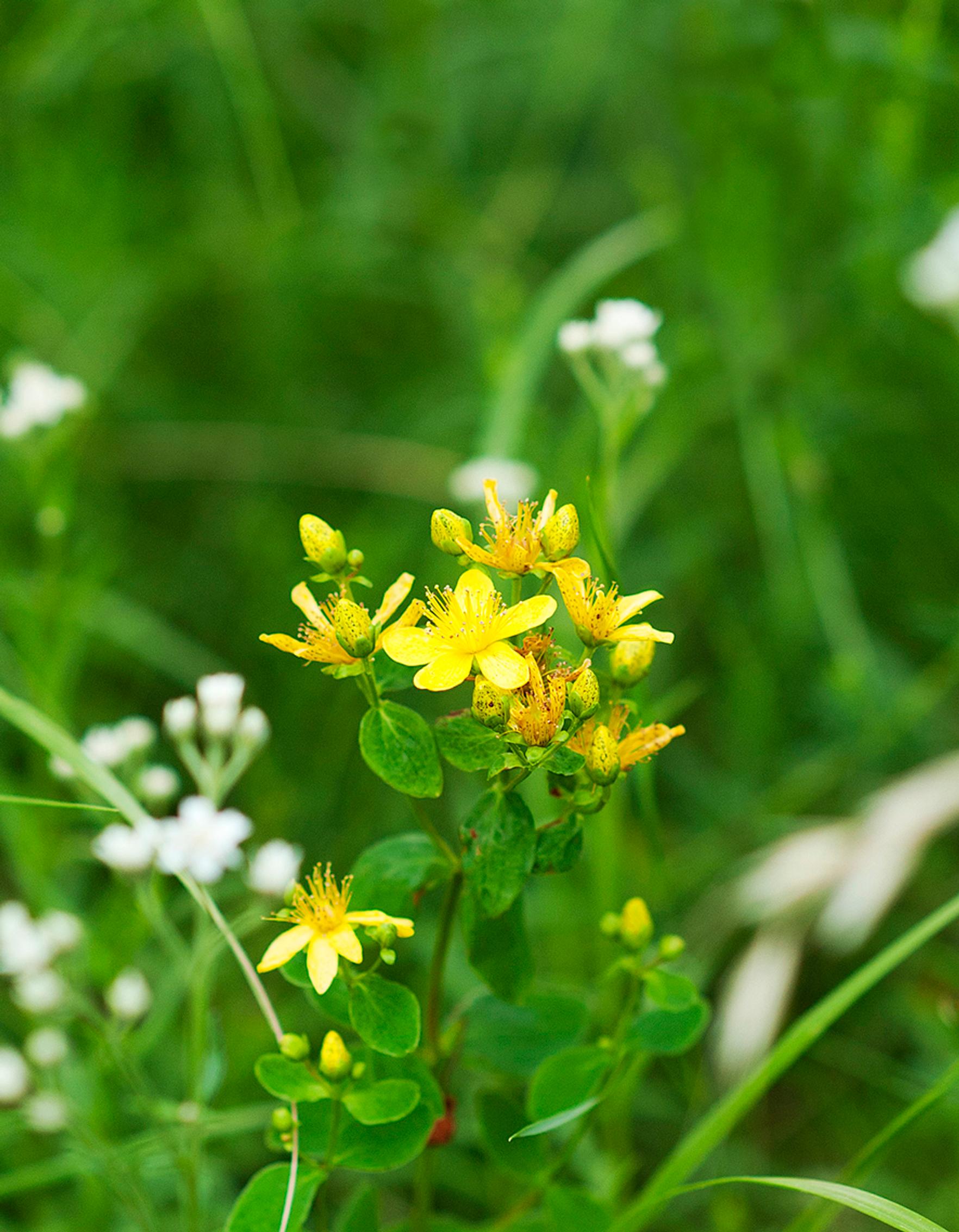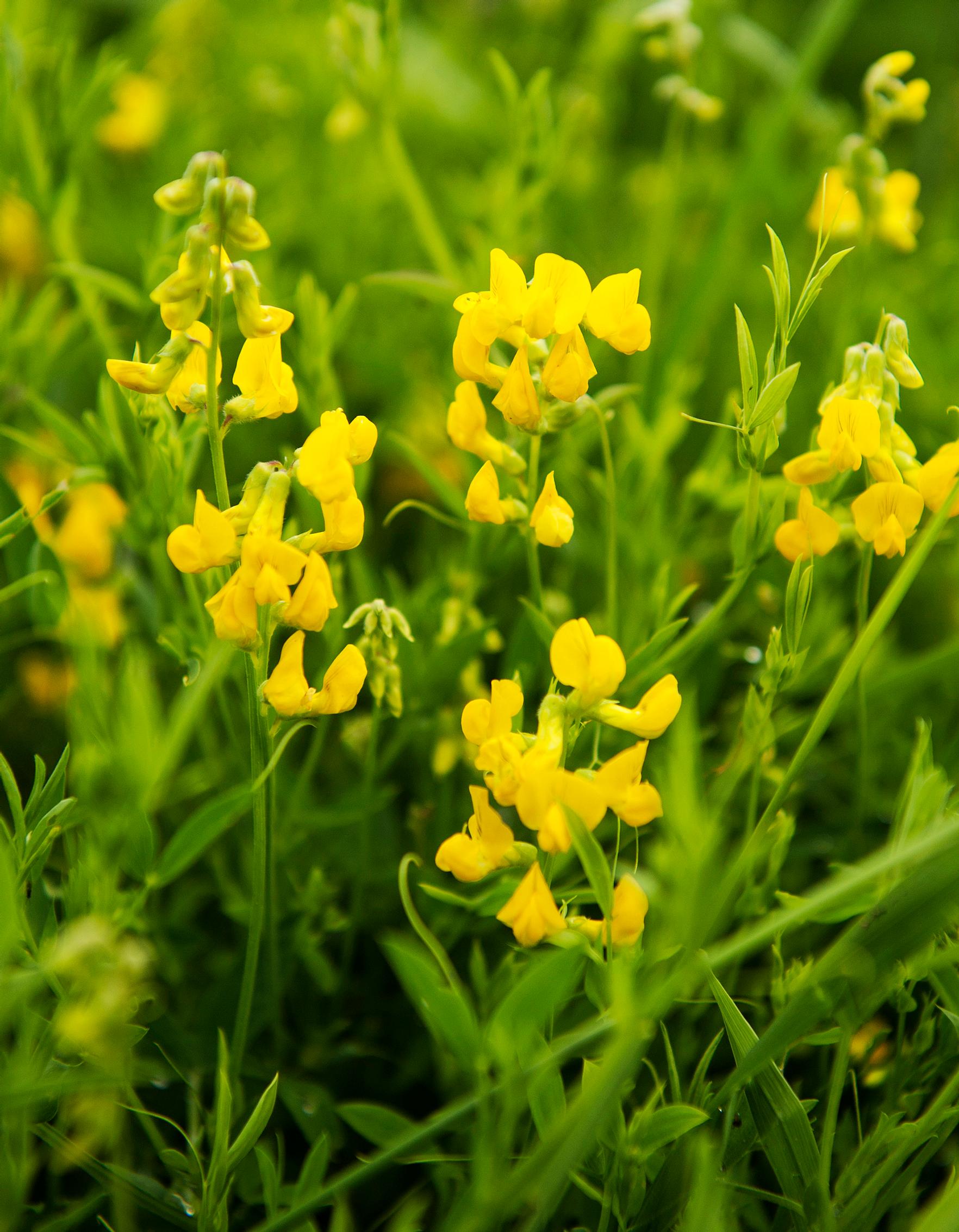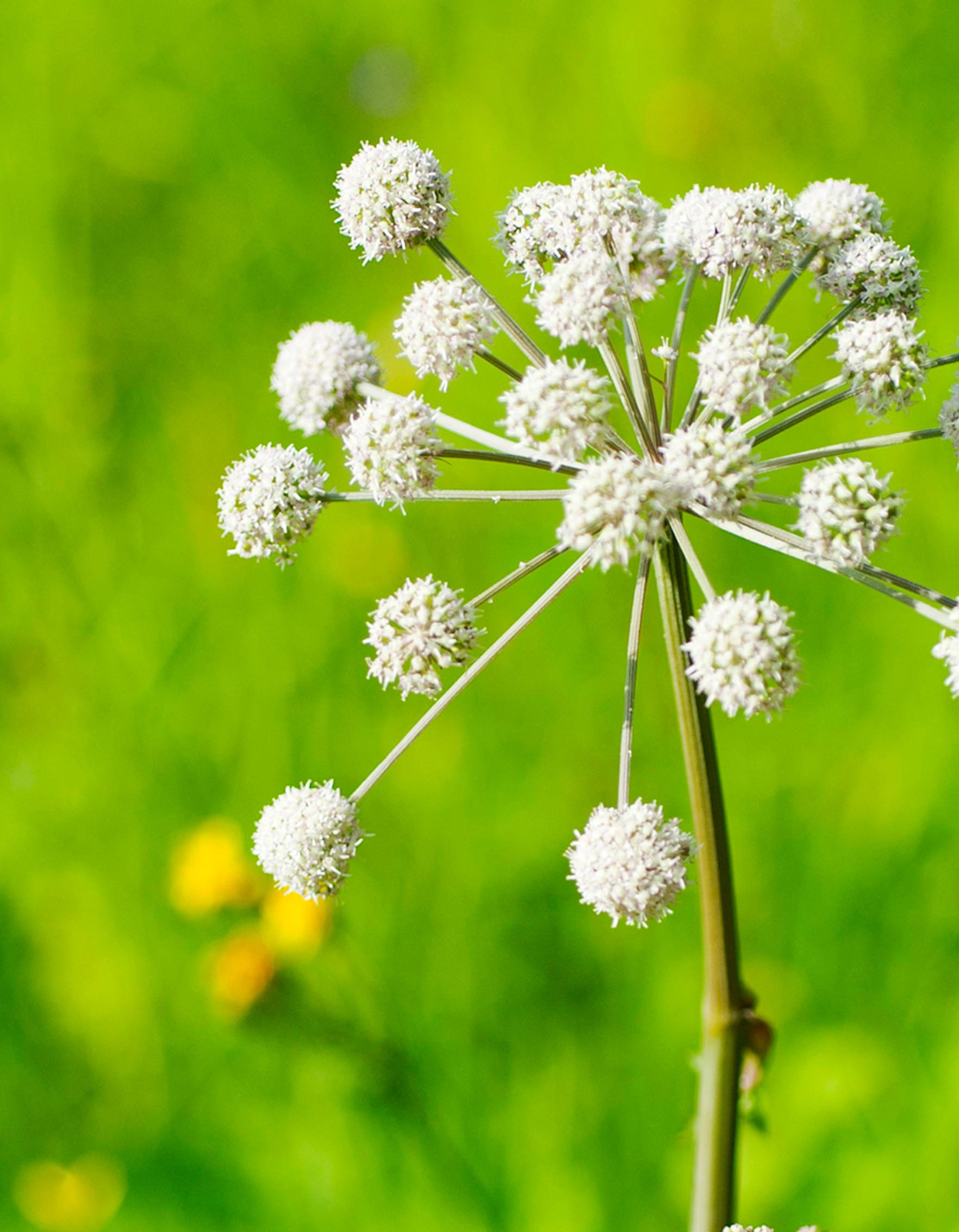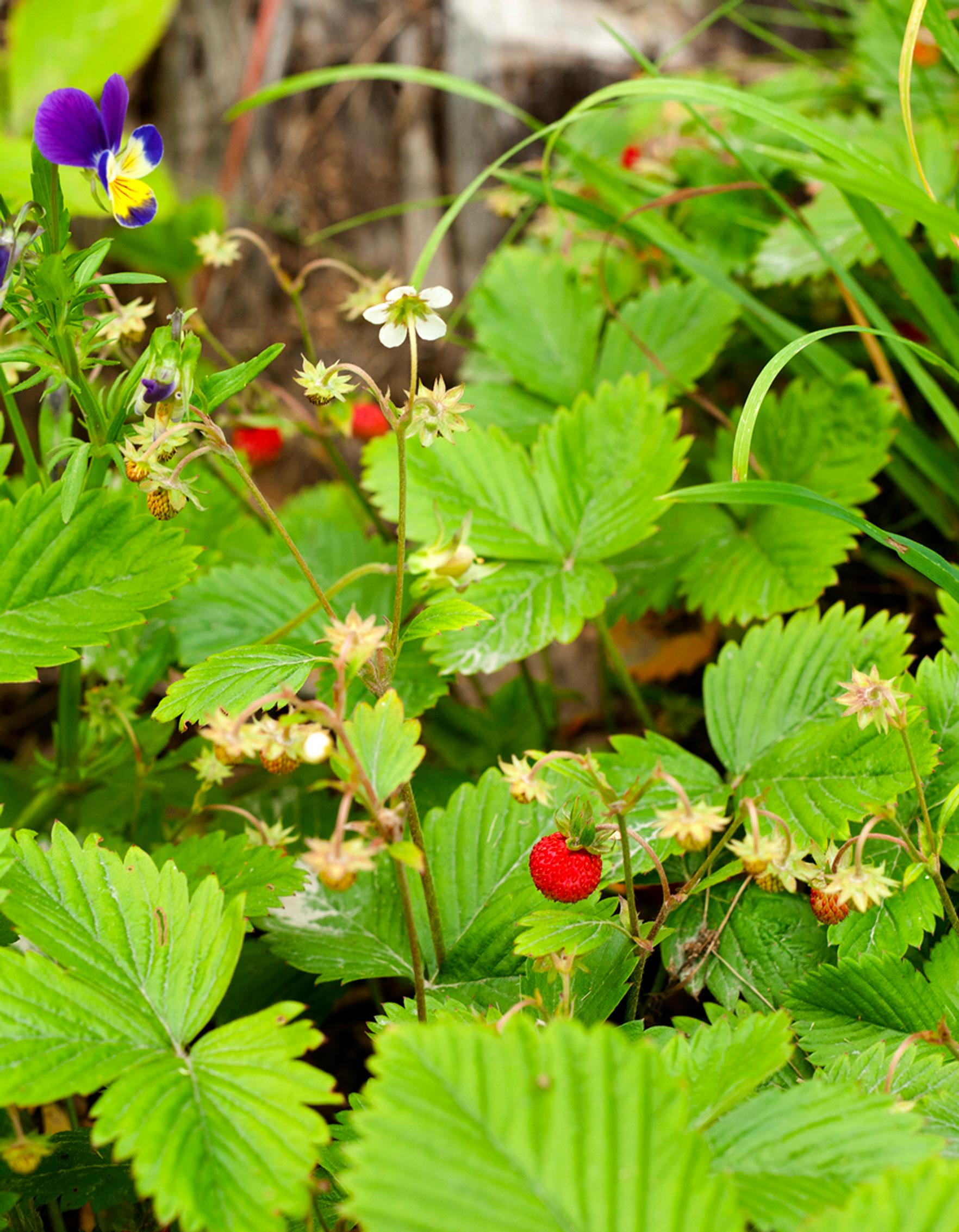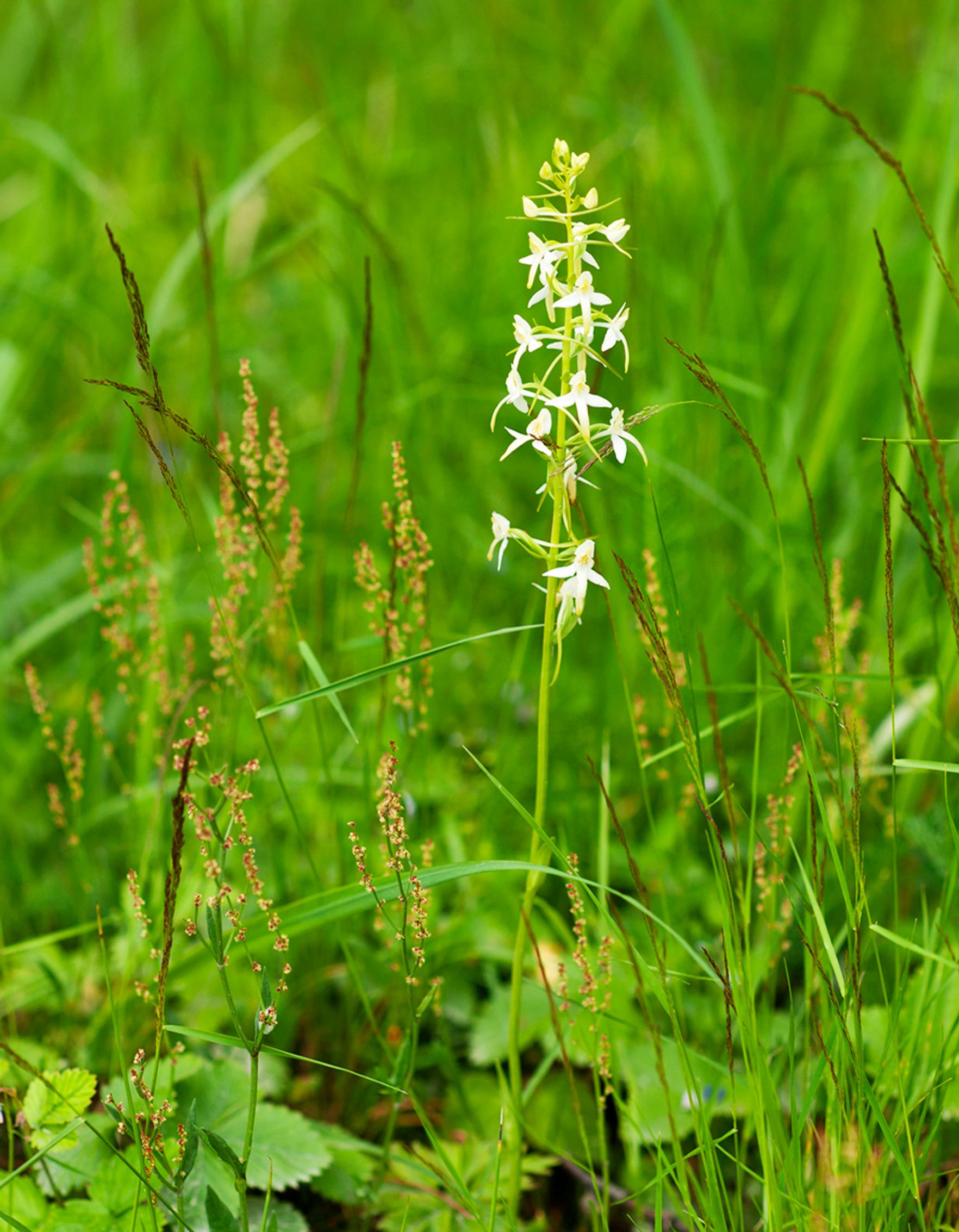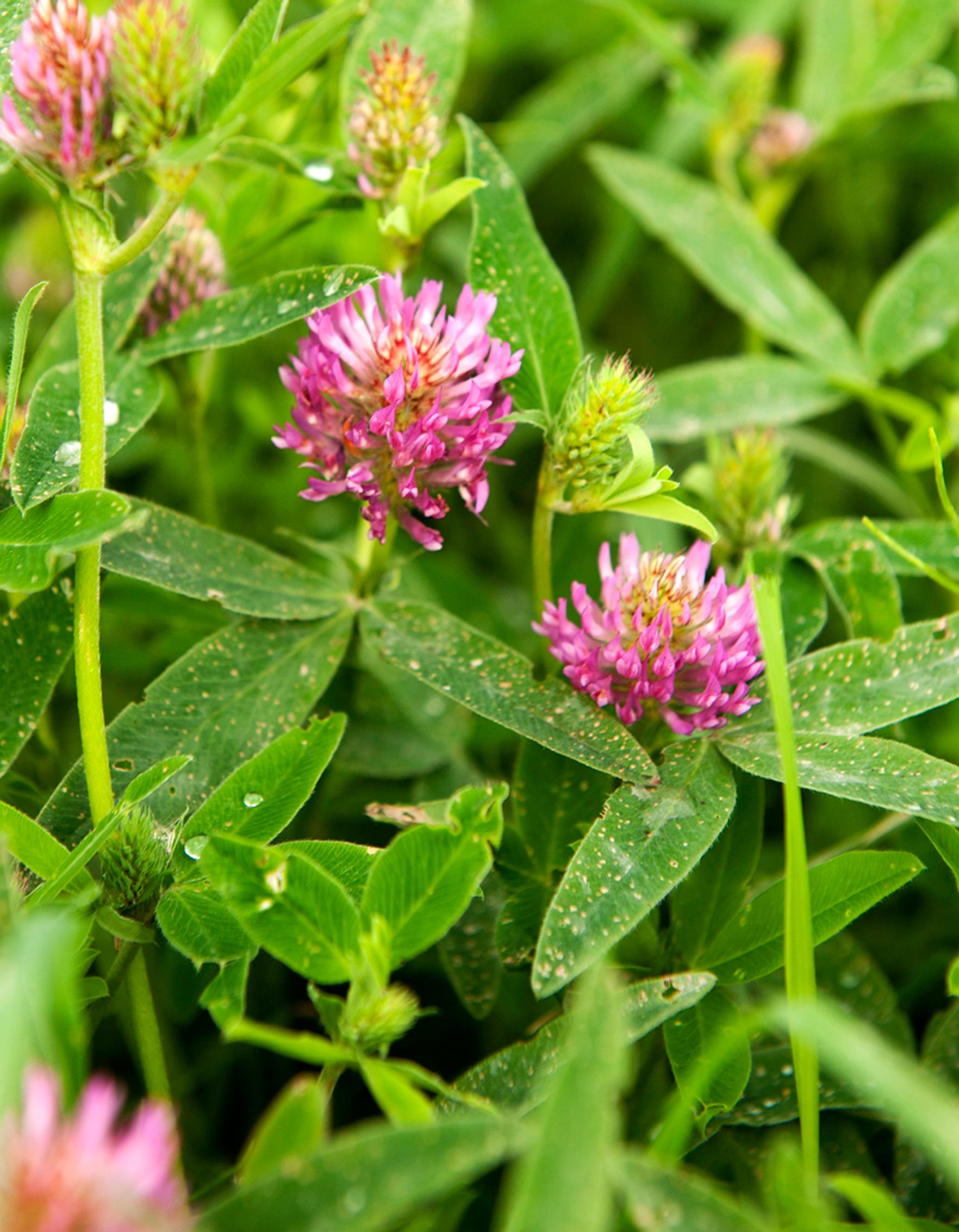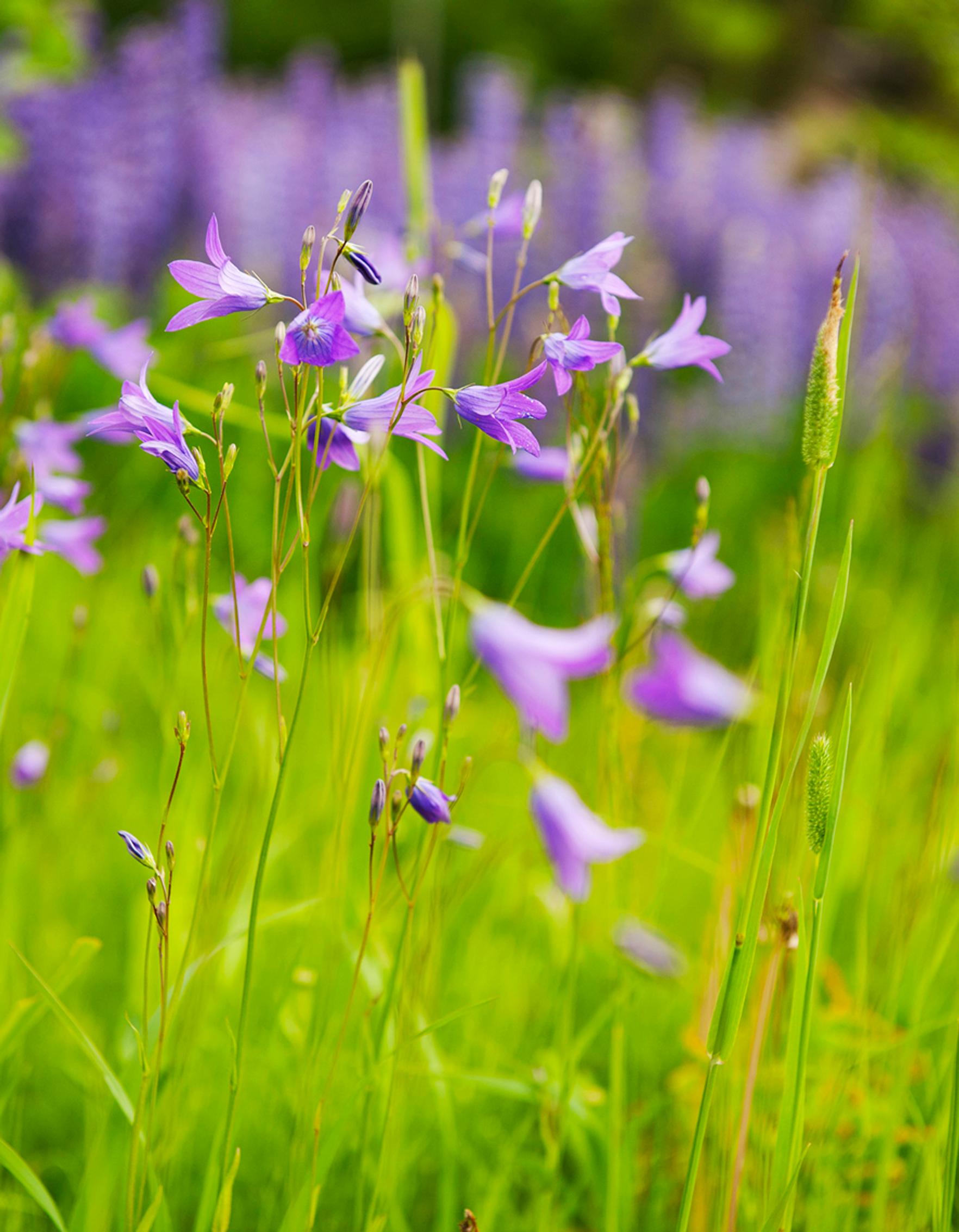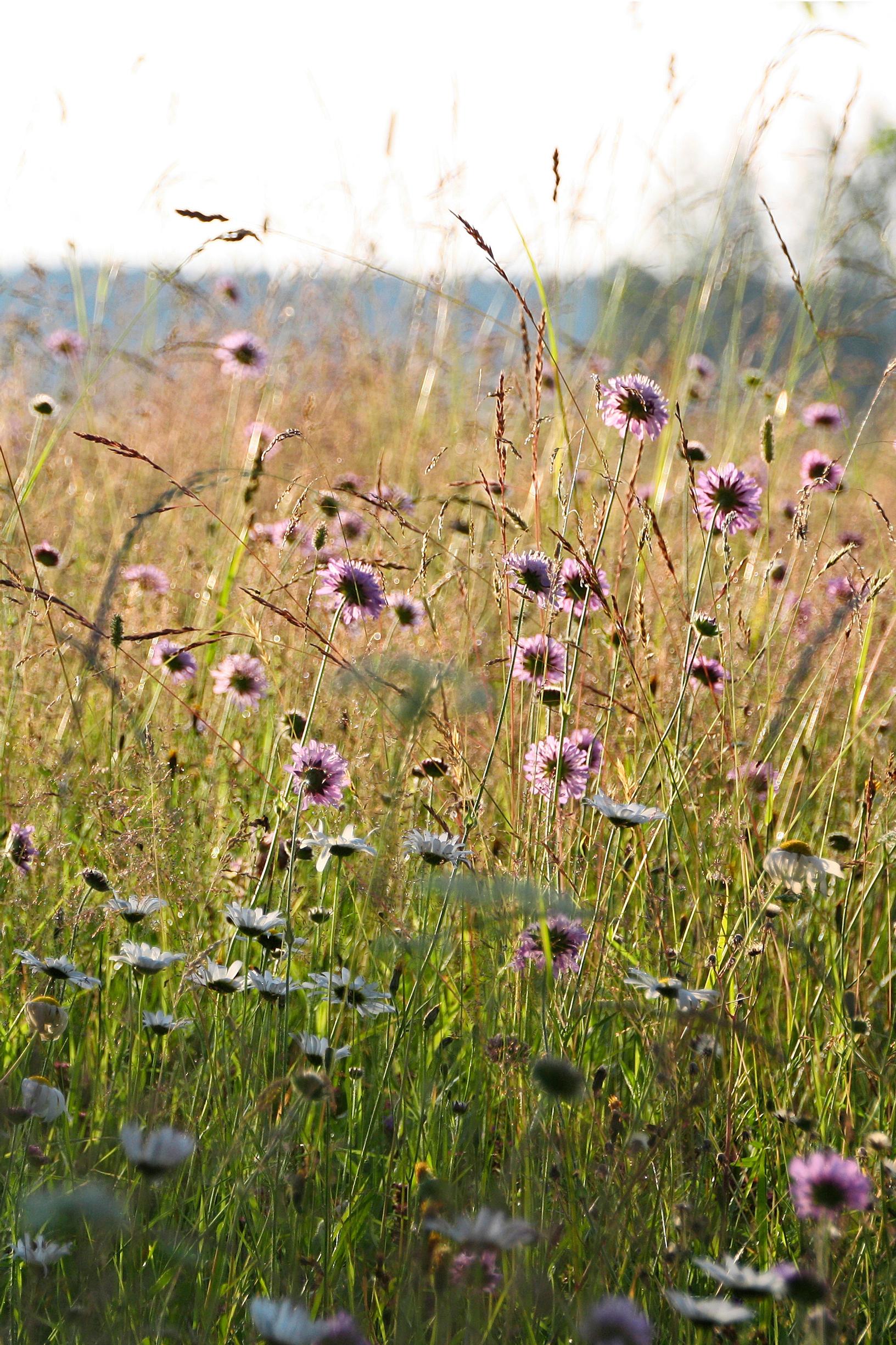
A wildflower meadow in your yard—Even a small strip along a path is sufficient!
A wildflower meadow is home not just to delicate flowers and grasses, but also to many butterflies and pollinators. You can create a dry meadow or a slightly more humid one, even in a small space. It’s hard not to get excited!
Wildflower meadow—top tips and ideas
As agriculture has changed, meadows have dwindled to just a fraction of their former extent. In a home garden, they’re a treat for the eyes and help maintain biodiversity.
Where should I plant my wildflower meadow?
A good spot for a wildflower meadow is a fairly dry, sunny part of your yard. The most diverse meadow will flourish in nutrient-poor, well-draining soil. In nutrient-rich soil, grasses and vigorous weeds can easily crowd out delicate meadow plants.
Transform a challenging area of your yard into a meadow
Does your yard have rocky spots or steep slopes? Maybe there are large trees that make mowing underneath them tricky. A sparse or hard-to-maintain area can be perfect for a meadow. A lawn and a meadow can easily coexist in the same yard.
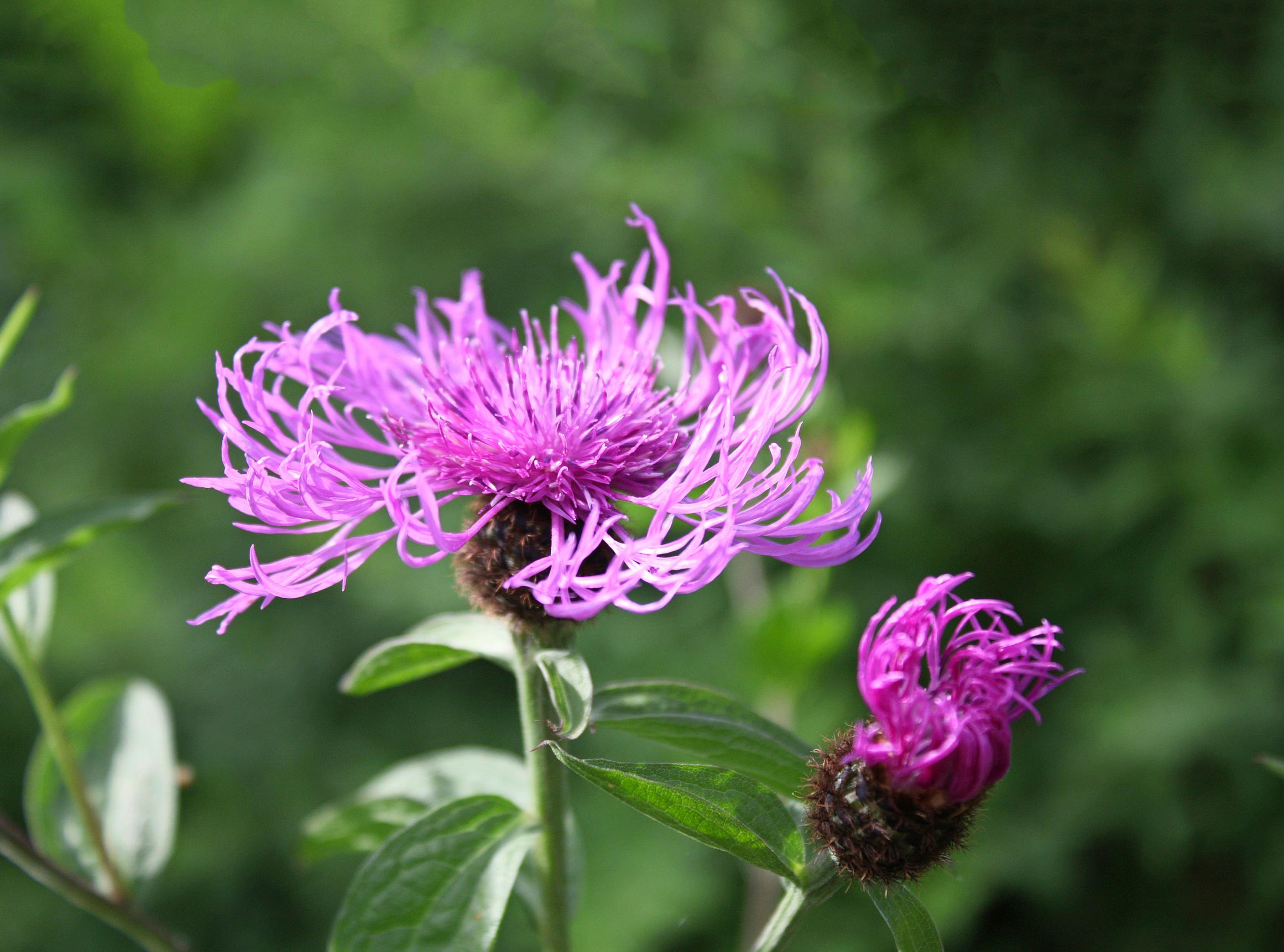
Banishing excess nutrients!
If you’re starting your meadow from seed, ensure the soil drains well and is sufficiently low in nitrogen. If needed, remove the top layer of nutrient-rich soil and mix in some sand. The easiest method, though, is to pick a location with conditions that are already right.
It’s best to establish your own meadow in a dry, nutrient-poor, sunny spot. In nutrient-rich soil, meadow and dry hillside plants can easily be overtaken by stronger species.
Treasures in your yard’s own seed bank
The soil’s seed bank holds a wealth of seeds that arrived naturally over time. Especially in an older yard, a meadow may form gradually if you just stop mowing. Remove any undesired plants and allow the ones you favor to go to seed.
You need surprisingly few seeds
For every are, you’ll need about 50–200 grams of grass seeds and only a few dozen grams of flower seeds. Check the exact amounts on the seed packet. For dry spots, sheep's fescue is a good meadow grass, while common bent suits slightly more humid areas.
A quick splash of blooms from annual flowers
If you want one summer’s worth of color, sow poppies, calendulas, or phacelia. You can sow both annual and perennial species together—annuals will flower the first year while perennials spend time developing foliage.
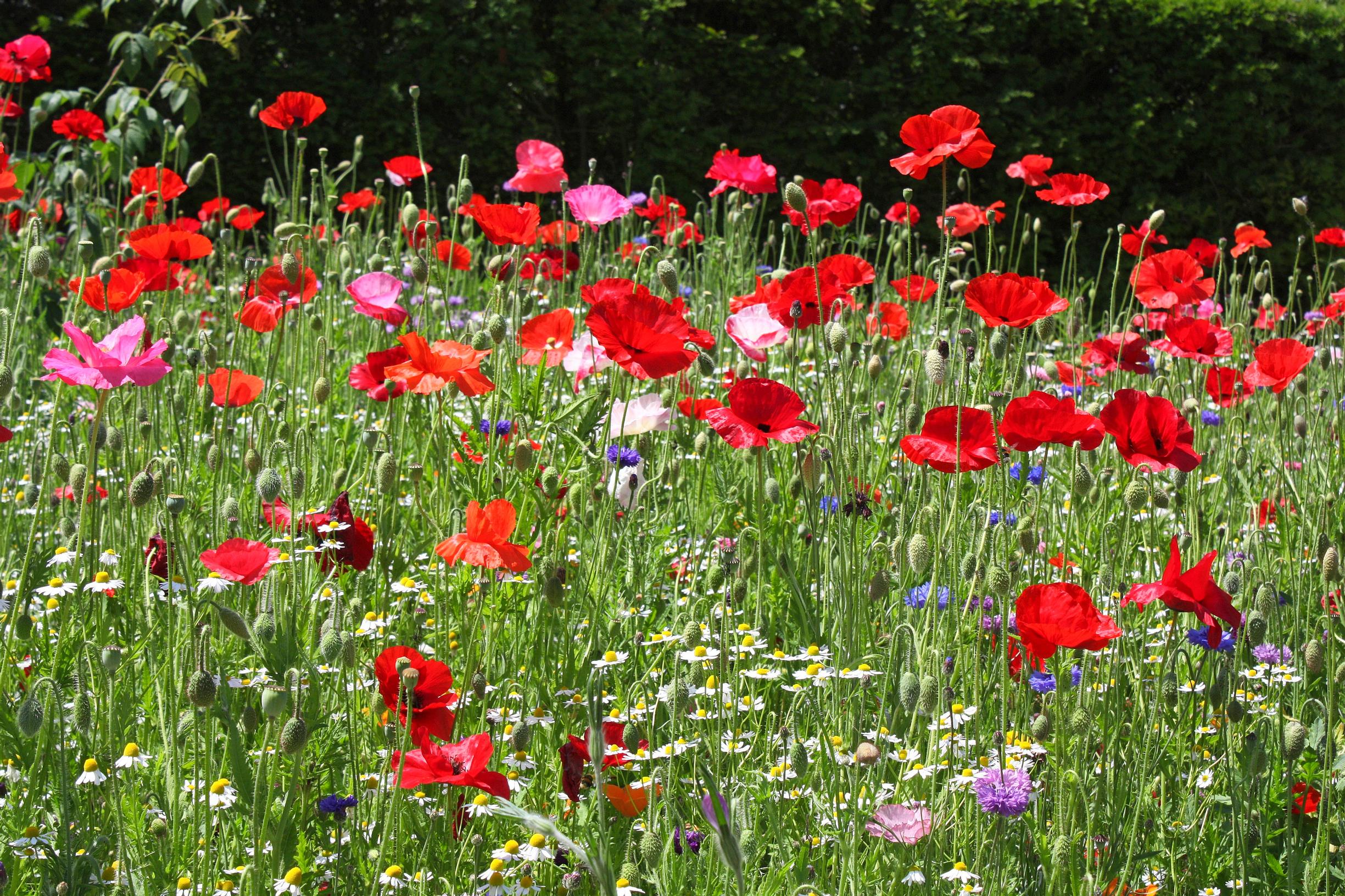
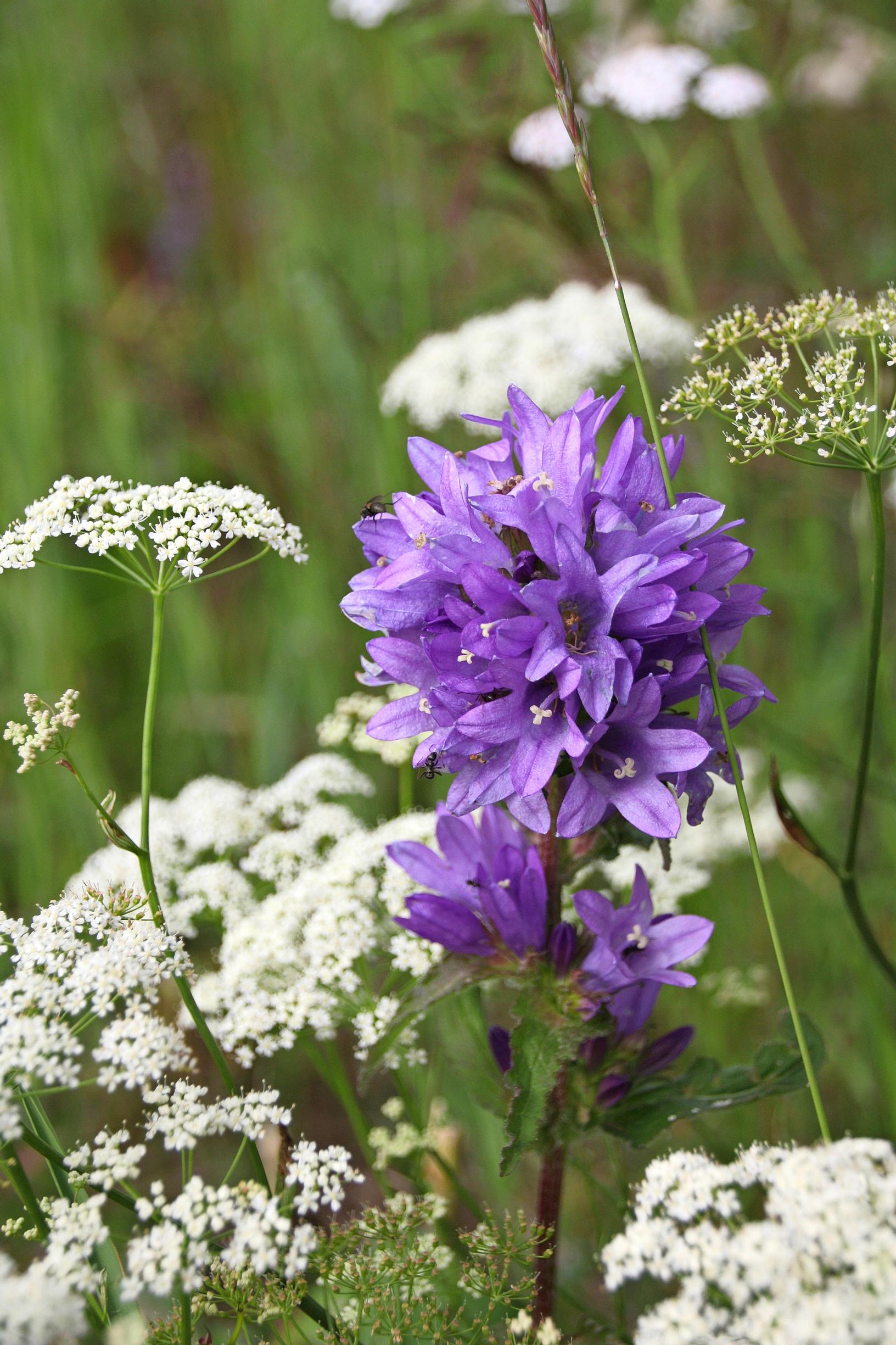
A clever idea: follow nature’s lead and sow in fall
Native wildflowers are adapted to the local climate. In Finland, the easiest way is to mimic nature and sow meadow seeds in autumn, allowing cold-stratified species to get the cool period they require over winter.
...but sowing in spring isn’t a bad idea either!
Autumn sowing is especially good for flat terrain, since on slopes seeds may wash away with melting snow. If you opt for spring sowing, there’s no need to wait for the soil to warm; you can sow as soon as the snow melts.
Spread the seeds, then press them down
Mix your seeds thoroughly with plenty of sand-peat blend to help you sow them evenly. Spread the mixture on bare soil, then press it down lightly so the seeds are in good contact with the earth. If the ground is dry, watering speeds up germination.
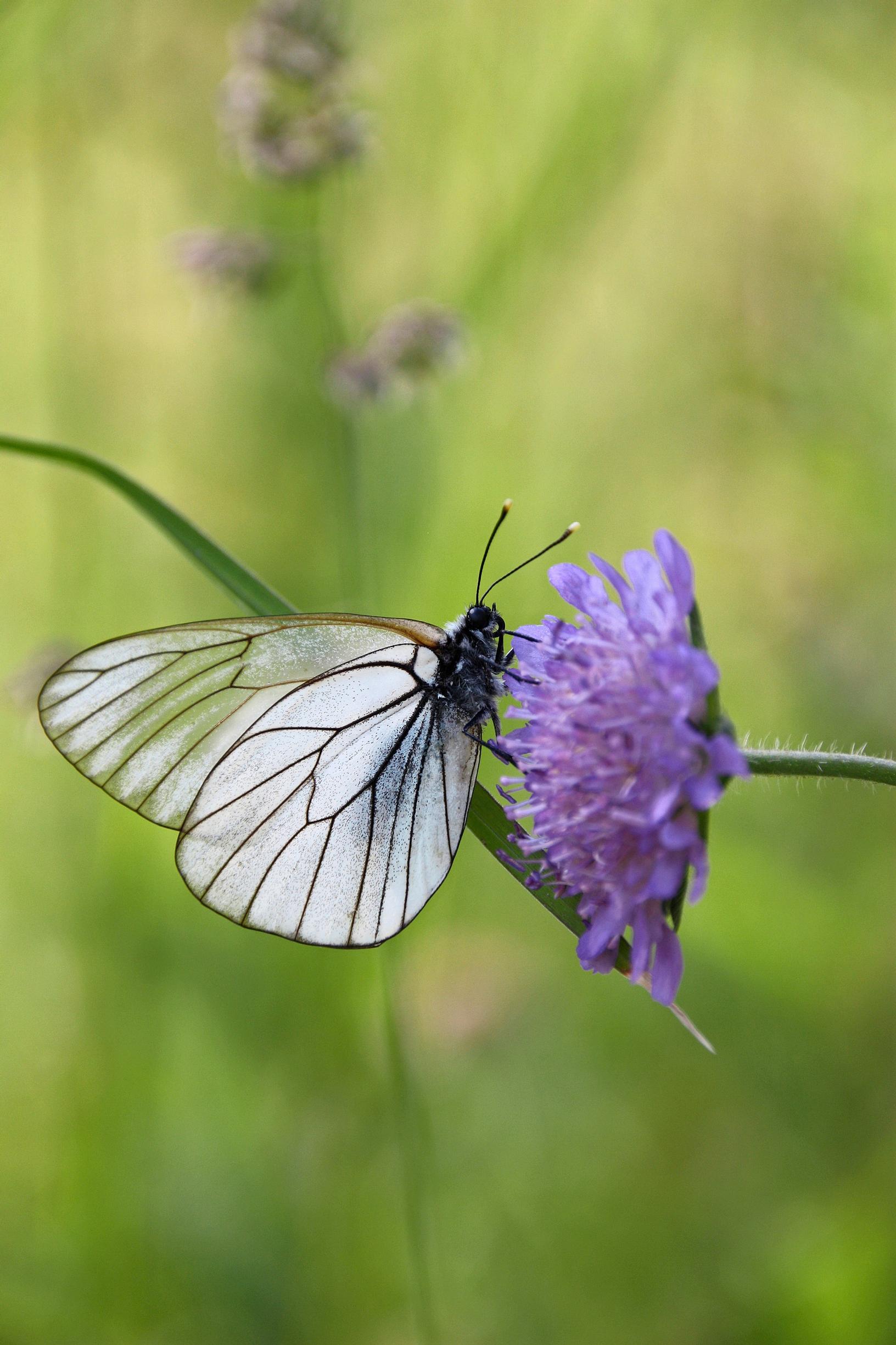
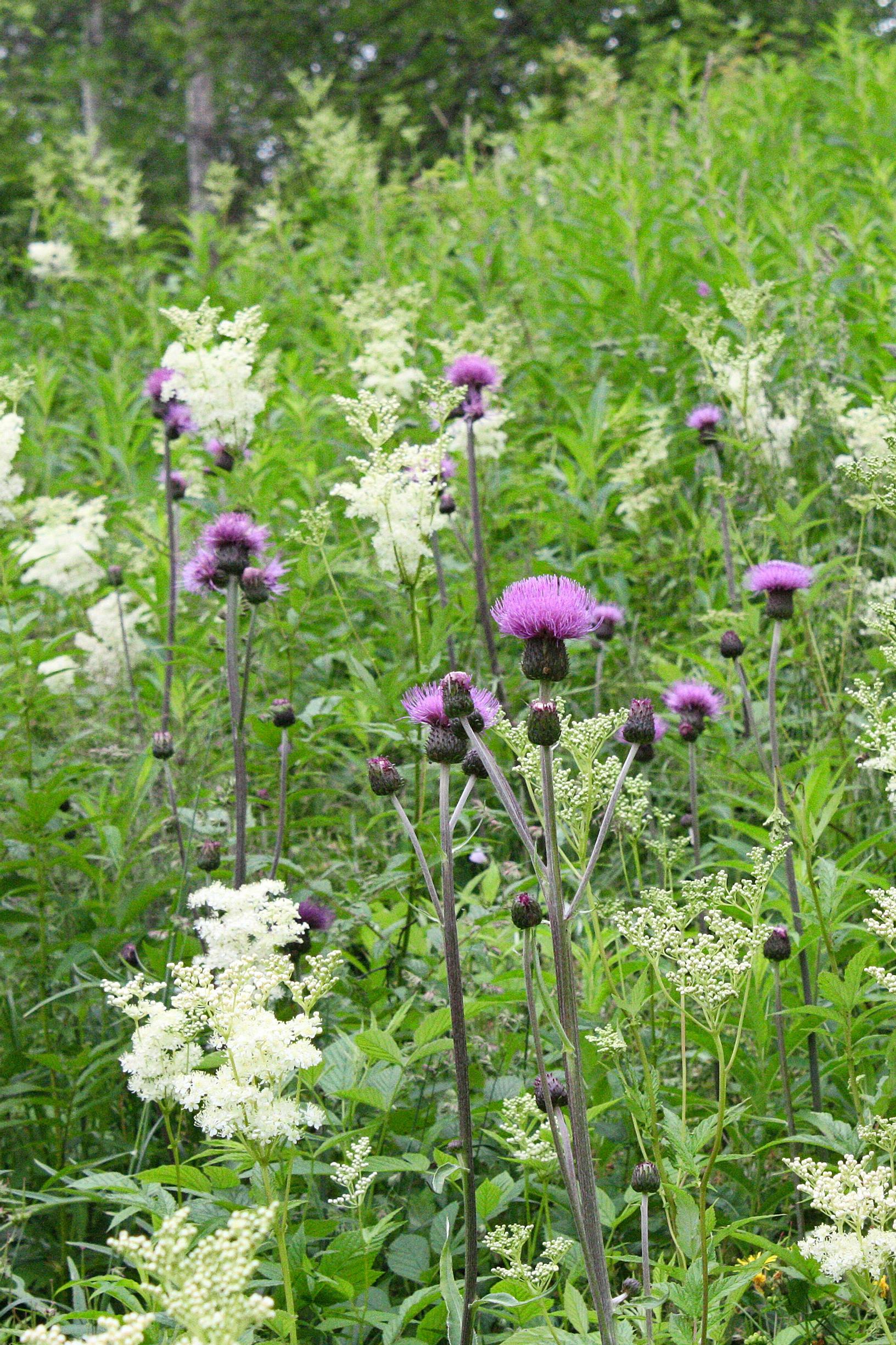
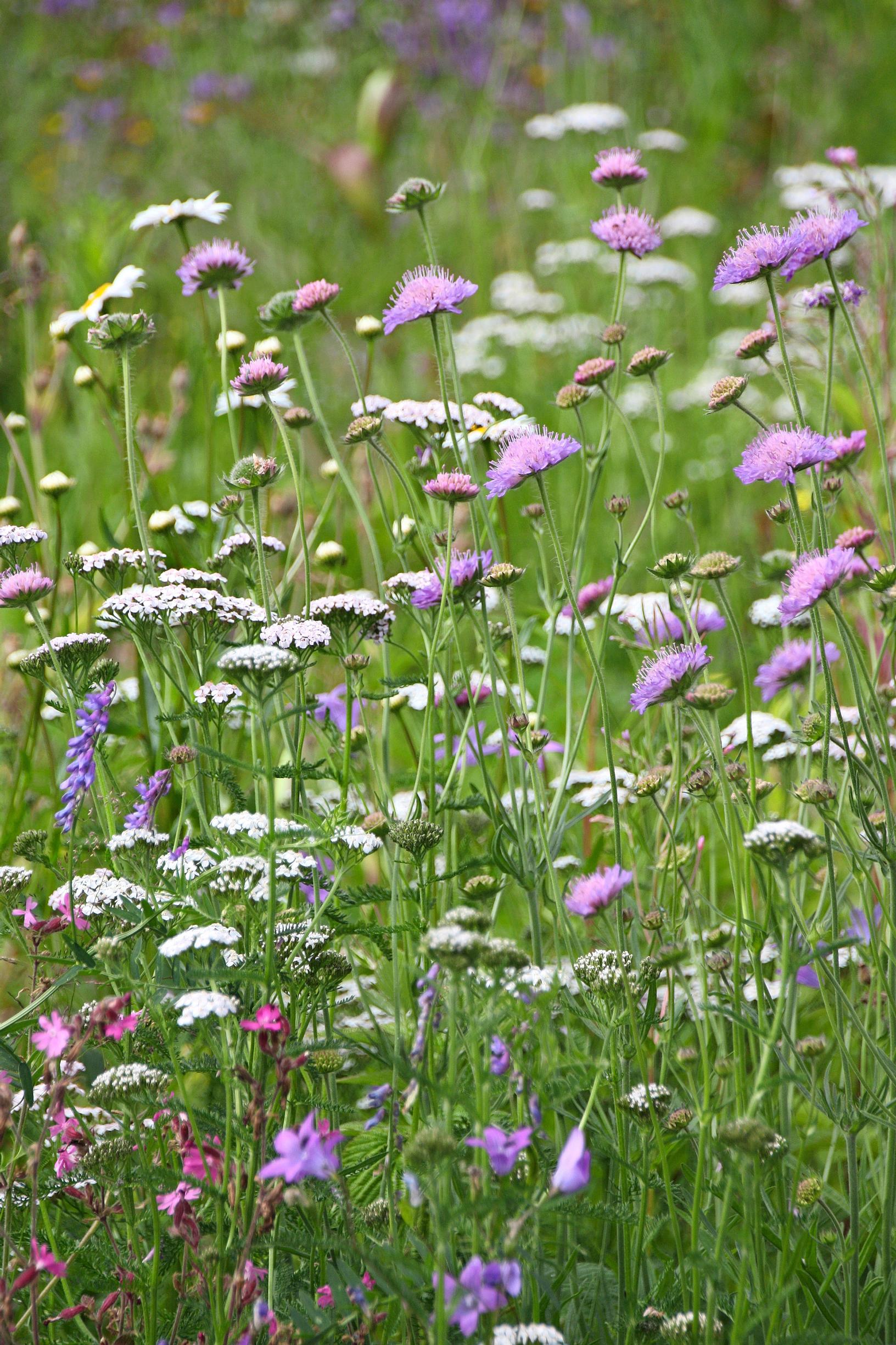
When should I collect seeds?
Different species mature at different times, so watch for that perfect collecting window. Forget-me-nots form seeds as early as July, while meadowsweet seeds can still be found in winter. Melancholy thistle seeds, with their fluffy tufts, can even float around in early winter.
Or should I just buy the seeds?
Choose native species and local seed suppliers. You can also get convenient seed mats with seeds embedded in biodegradable fabric.
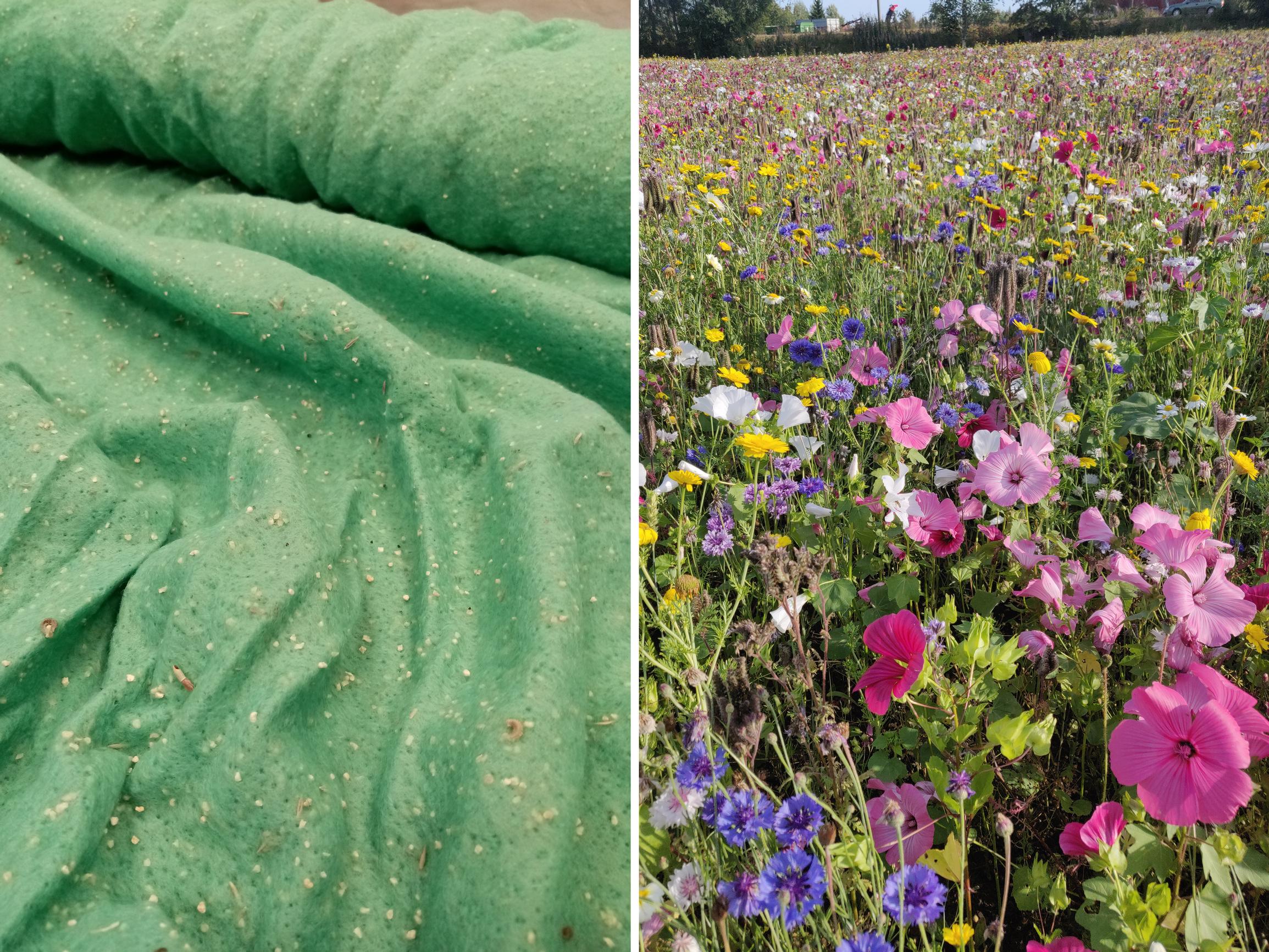
Wildflowers for different conditions
Finnish native plants offer blooms for almost every habitat.
- Dry meadow species: maiden pink, sticky catchfly, field scabious, yarrow, common harebell.
- Fresh meadow species: common self-heal, red campion, brown knapweed, meadow crane's-bill.
- Moist meadow species: yellow flag, meadowsweet, yellow loosestrife, purple loosestrife.
Watch out for harmful invasive species
Don’t ever sow invasive species in your meadow. They spread aggressively and crowd out other vegetation, threatening natural meadows and wetlands. If you find them in your yard, ensure you discard garden waste responsibly to avoid spreading these invaders.
Give old treasures a safe haven
Many traditional meadow plants are now rare due to shrinking habitats. In your home meadow, you can offer a haven for these old favorites. Do you know Trifolium spadiceum, leathery grapefern, maiden pink, or bristly bellflower?
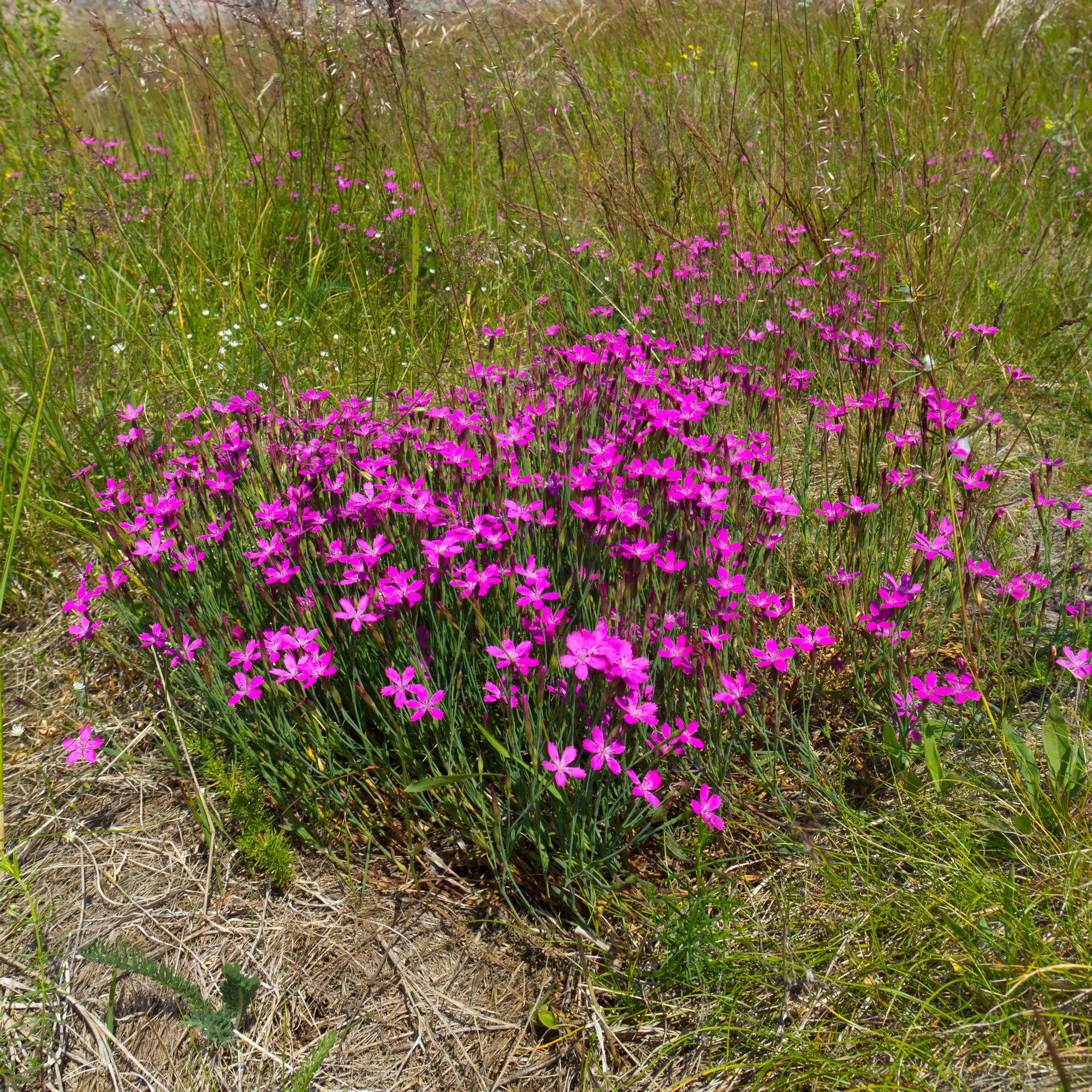
Mow and rake to keep your meadow thriving
Removing the clippings is crucial because leaving them will enrich the soil, letting grasses take over and reducing meadow flowers over time. Rake up dried stems and seed heads using a long-toothed rake once they’ve dropped their seeds. The clippings are great in compost or as mulch under berry bushes or ornamental shrubs. Or perhaps you’d enjoy setting up a few hay racks in your meadow?
Master the technique
Choose a scythe that fits you and learn the right mowing and sharpening methods from the beginning. Always keep a sharpening stone nearby, as successful mowing depends on a sharp blade.
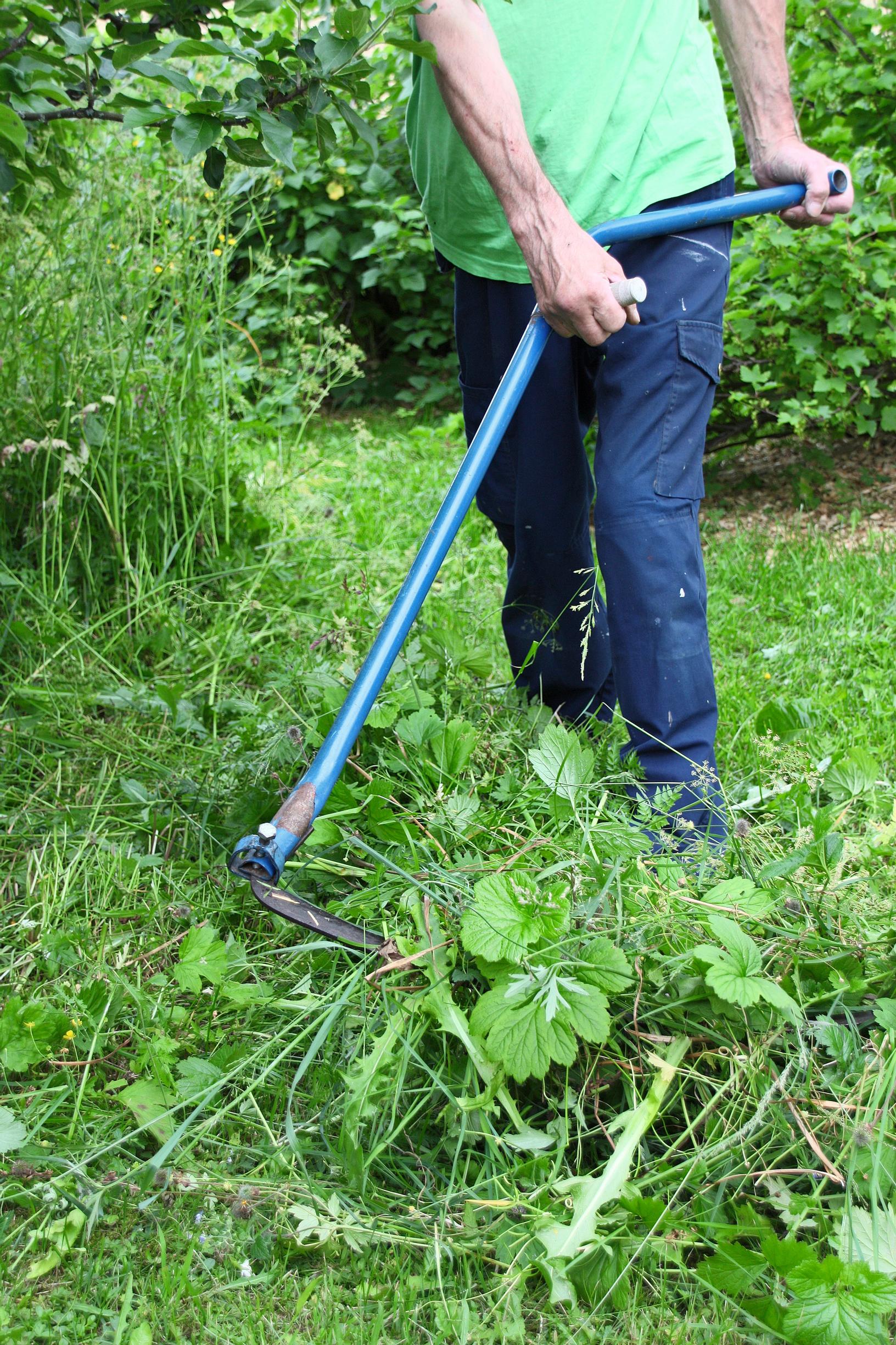
Let seeds fall—unless they belong to unwelcome newcomers!
Mow in late summer after flowering is done. Let the cut stems lie for a week or two so the last seeds can drop. Mow or pull out any undesired species two or three times over the summer—and always before they go to seed!
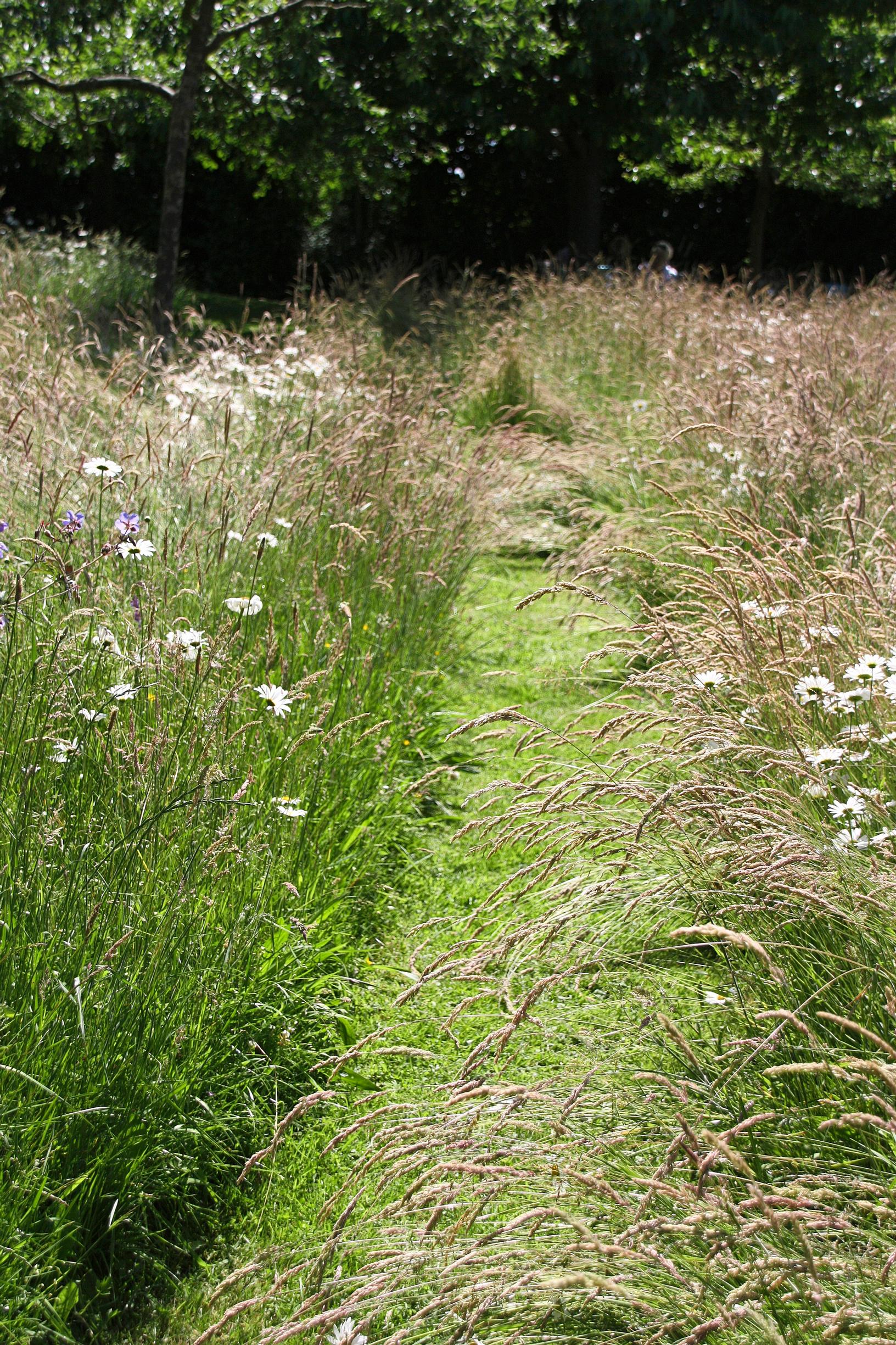
Your home meadow doesn’t have to be big or rectangular. It can be a narrow strip by a path or a patch in the middle of your mowed lawn. Experiment with shape and size!
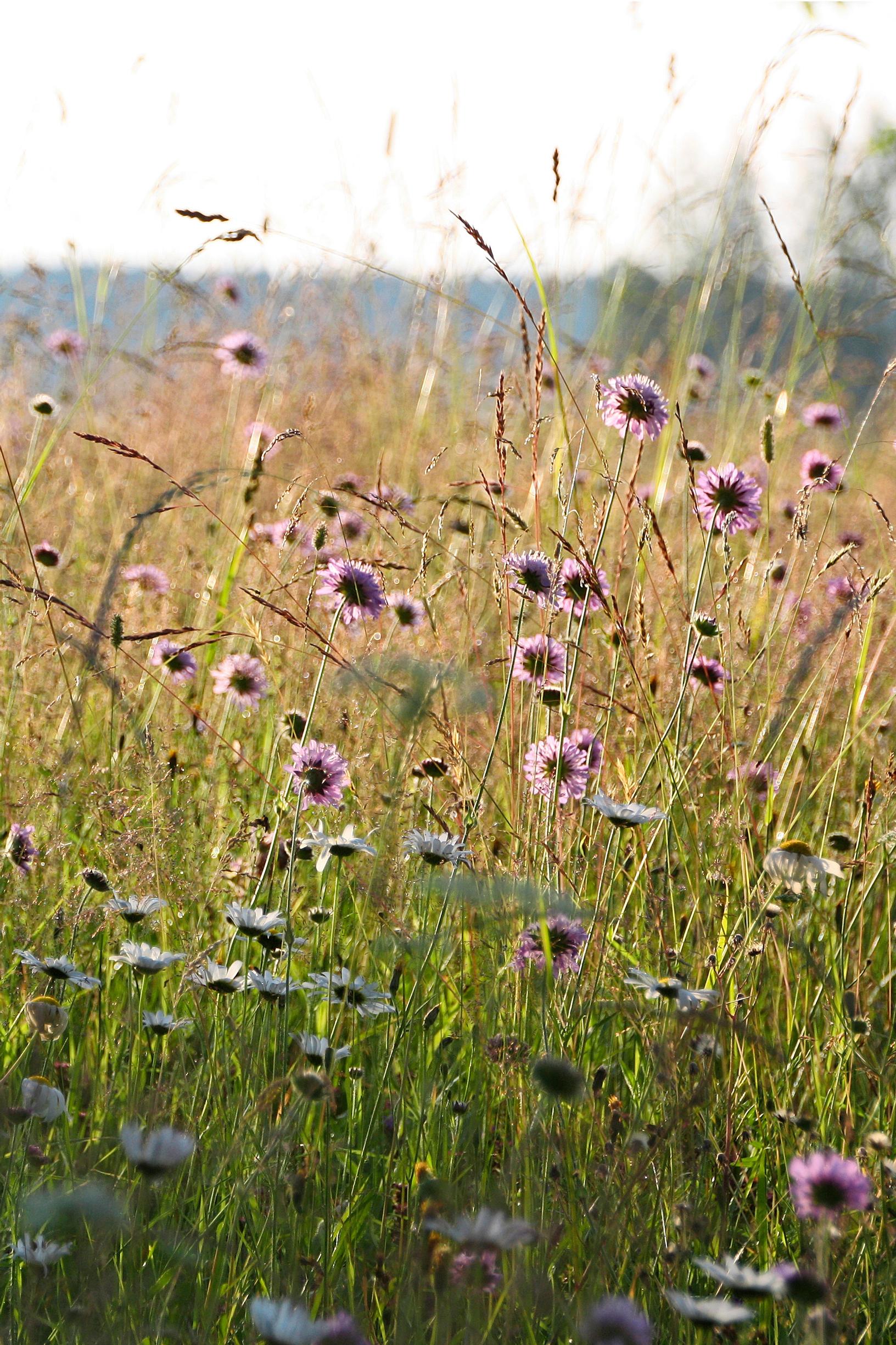
Find inspiration close to home
Look around your area for meadow inspiration. Study field edges, roadsides, vacant lots, and railway sidings. Explore fallow land and unused fields—you may spot surprising combinations and fresh ideas.
Mow an inviting path through your meadow
Cut a path through your meadow. Use a lawnmower to shape a gently curving walkway, letting you walk among the flowers without crushing them. Keep the path narrow and mow it regularly. You’ll find the path’s end especially tempting.
A meadow is an insect paradise
A meadow harbors beneficial invertebrates like bees, butterflies, and beetles, whose pollinating efforts are crucial for many crops. It’s also an excellent habitat for vital soil organisms.
Gather meadow treasures for a bouquet
Cut a bouquet and bring a piece of the meadow inside. The flowers will last longest if you pick them early in the morning, when they’re well-hydrated. Mix in plenty of grasses and foliage for a lavish, natural look.
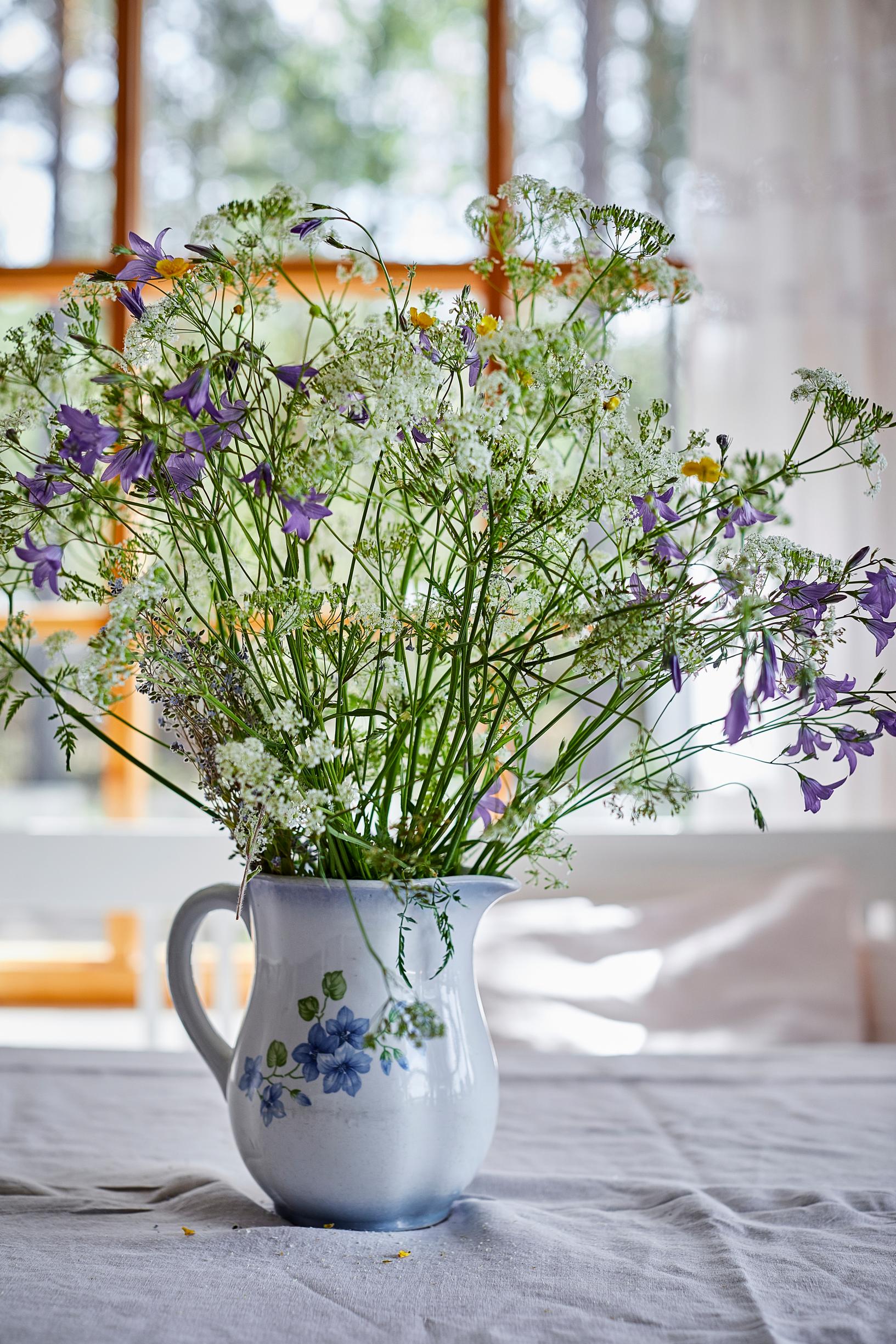
Here’s how to establish a wildflower meadow:
- Pick your spot carefully and consider moisture, soil type, and available light. Remove weeds, loosen the soil, and add sand if necessary to reduce fertility.
- Choose plant species to suit your site. Sow seeds in spring or late summer. Combine small seeds with sand for even distribution, and don’t cover them, as many meadow plants need light to germinate. They grow slowly, and some might not sprout until the following spring after experiencing natural cold stratification.
- You can also raise some seedlings indoors and then plant them in the meadow, which often improves early growth success.
- After your meadow is established, mow it once a year after it finishes blooming, usually around August. Collect the clippings about a week later, giving meadow plants enough time to drop their seeds without enriching the soil too much. Remove unwanted plants like birch saplings, raspberries, or invasive weeds. If necessary, pull out invasive plants before mowing.
- Another option is to create meadow patches, sowing wildflowers in specific spots and lawn grasses around them. This approach can make it easier to nurture delicate wildflowers in the early stages, since grasses won’t crowd them out.
A 5–10 cm growing layer is enough. The safest bet is a mix of peat, nutrient-poor soil, and sand. Field soil often carries weed seeds, and compost is too rich in nutrients. There’s no need for fertilizer, as meadow plants don’t thrive in highly fertile soil.
Perennial meadow flowers may take a year or two to bloom after sowing, so be patient. You can brighten things up with annual flowers in the first few years. Over time, maintenance will ease, and as your meadow’s diversity grows, you’ll have more time to simply enjoy it!
Are you familiar with these meadow and dry hillside beauties?
